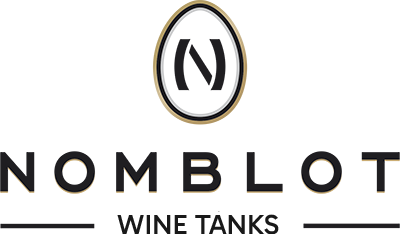The Château Pontet-Canet vineyard is based in Pauillac, into the great land of Médoc. They switch from conventional to biodynamic wine-making in a few years.
By transforming their way of work, they upgraded the wine’s quality. Furthermore, they choose to trust Nomblot, french concrete wine fermentation tanks manufacturer, to renew the vat room.
You might say that this new vat room was inspired by the cutting-edge methods used by the famous visionary Skavinski, but obviously updated in light of the great technological strides made over the last century. The new vat room was operational for the 2005 vintage.
The first of its kind in the Médoc, this vat room houses 32 truncated cone-shaped vats, each with a capacity of 80 hectolitres (2100.00 US Gal). These vats are located in the previous cement vat room, dating back to the 1940s and renovated several times since. The previous vats were all taken out to make space for them. Furthermore, the stainless steel vat room, built in 1986, was also abandoned.
Micro-oxygenation of wine
These wine fermentation tanks offer ideal conditions for a natural fermentation of the wine. They are both aesthetic and practical.
First, wine fermentation tanks designed by Nomblot are made of concrete, which ensures a constant temperature inside the vat. This way, the wine fermentation unfold gently, away from harmful temperature gaps.
Second, the concrete permits a micro-oxygenation process inside the wine fermentation tanks. Microscopic bubbles of oxygene go throught the wine and soften the tannins, which release plenty of aroms in the beverage.
Finally, concrete wine fermentation tanks conceived by Nomblot for the Château Pontet-Canet vineyard enhanced the global quality of their production.
WINE TANKS USED

The model used in this winery is the High-Conicity Truncated Tank. See all features.

The model used in this winery is the Low-Conicity Truncated Tank. See all features

